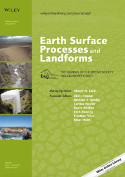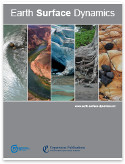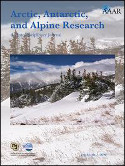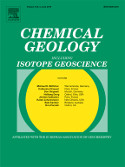Contact Us





Department of Geology and Geophysics
1000 E. University Ave.
Laramie, WY 82071-2000
Phone: (307) 766-4141
Fax: (307) 766-6679
Email: geol-geophys@uwyo.edu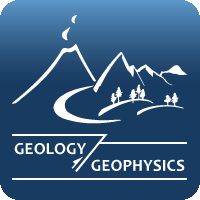
-
Controls on deep critical zone architecture: A historical review and four testable hypotheses - Riebe
-
Catchment power and the joint distribution of elevation and travel distance to the outlet - Riebe
-
Microbial Community Structure of Subalpine Snow in the Sierra Nevada, California - Riebe
- Exploring the role of mantle eclogite at mid-ocean ridges and hotspots: U-series constraints on Jan Mayen Island and the Kolbeinsey Ridge - Scott & Sims
- Isotopic constraints on the genesis and evolution of basanitic lavas at Haleakala, Island of Maui, Hawaii - Phillips and Sims
-
Quantifying bone weathering stages using the average roughness parameter Ra measured
from 3D data - Vietti
- Experimental Study of Porosity Changes in Shale Caprocks Exposed to Carbon Dioxide-Saturated Brine II: Insights from Aqueous Geochemistry - Miller, Wang & Kaszuba
- Experimental Study of Porosity Changes in Shale Caprocks Exposed to CO2-Saturated Brines I: Evolution of Mineralogy, Pore Connectivity, Pore Size Distribution, and Surface Area- Wang, Kaszuba & Miller
- First direct observation of coseismic slip and seafloor rupture along a submarine normal fault - John
- High precision U-Pb dating of ODP Holes 735B and 1105A, Atlantis Bank, Southwest Indian Ridge - Cheadle and John
- The problem of predicting the size distribution of sediment supplied by hillslopes to rivers – Riebe and Lukens
- Grain size bias in cosmogenic nuclide studies of stream sediment in steep terrain – Lukens and Riebe
- The structure of Holocene climate change in mid-latitude North America – Shuman and Marsicek
- North Atlantic hotspot-ridge interaction near Jan Mayen Island – Scott and Sims
Controls on deep critical zone architecture: a historical review and four testable hypotheses
The base of Earth's critical zone (CZ) is commonly shielded from study by many meters of overlying rock and regolith. Though deep CZ processes may seem far removed from the surface, they are vital in shaping it, preparing rock for infusion into the biosphere and breaking Earth materials down for transport across landscapes. This special issue highlights outstanding challenges and recent advances of deep CZ research in a series of articles that we introduce here in the context of relevant literature dating back to the 1500s. Building on several contributions to the special issue, we highlight four exciting new hypotheses about factors that drive deep CZ weathering and thus influence the evolution of life‐sustaining CZ architecture.
Catchment power and the joint distribution of elevation and travel distance to the outlet
The delivery of water, sediment, and solutes by catchments is influenced by the distribution of source elevations and their travel distances to the outlet. For example, elevation affects the magnitude and phase of precipitation, as well as the climatic factors that govern rock weathering, which influence the production rate and initial particle size of sediments. Travel distance, in turn, affects the timing of flood peaks at the outlet and the degree of sediment size reduction by wear, which affects particle size distributions at the outlet. The distributions of elevation and travel distance have been studied extensively but separately, as the hypsometric curve and width function. Yet a catchment can be considered as a collection of points, each with paired values of elevation and travel distance.
Microbial Community Structure of Subalpine Snow in the Sierra Nevada, California
Mounting evidence suggests that Earth’s cryosphere harbors diverse and active microbial communities. However, our understanding of microbial composition and diversity in seasonal snowpack of montane ecosystems remains limited. We sequenced the 16S rRNA gene to determine microbial structure (composition and diversity) of snow at two depths (0–15 and 15–30 cm) of a subalpine site in the Southern Sierra Critical Zone Observatory, California, U.S.A. Proteobacteria dominated both depths (~72% of sequences), and this phylum was composed mostly of bacteria within the Rhodospirillales order. Cyanobacteria were almost exclusively present in the upper snow layer, while Actinobacteria and Firmicutes were more abundant in the deep snow layer. Many of the most abundant phylotypes were Acetobacteraceae.
Exploring the role of mantle eclogite at mid-ocean ridges and hotspots
U-series constraints on Jan Mayen Island and the Kolbeinsey Ridge. Sensitivity to rates of melting and to the presence of garnet in the melting residue makes U-series isotope disequilibrium a helpful tool for assessing the presence and role of mantle eclogite rocks in generating magmatic crust at both mid-ocean ridges and hotspots. Here we present 238U-234U-230Th-226Ra-210Pb isotope disequilibria data for a suite of fresh lavas from the tectonically and geochemically complex Jan Mayen region, including Jan Mayen Island; the Northern Kolbeinsey Ridge, which hosts the anomalous Eggvin Bank bathymetric high; and the Southern Mohns Ridge.
Contact Us





Department of Geology and Geophysics
1000 E. University Ave.
Laramie, WY 82071-2000
Phone: (307) 766-4141
Fax: (307) 766-6679
Email: geol-geophys@uwyo.edu

